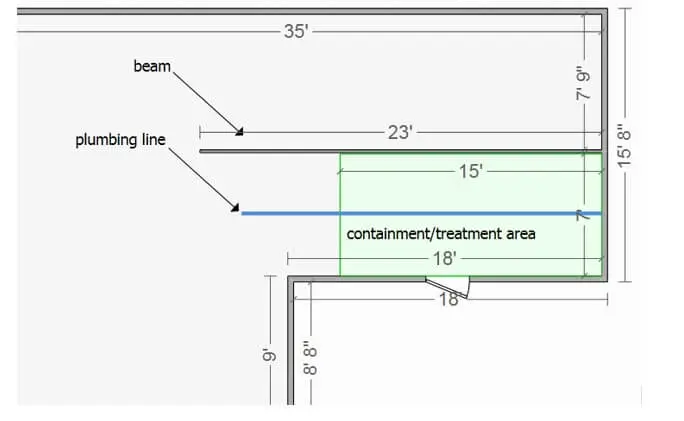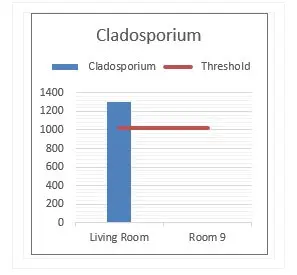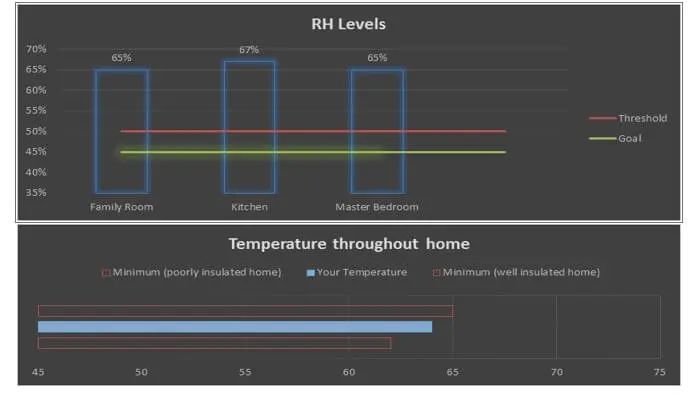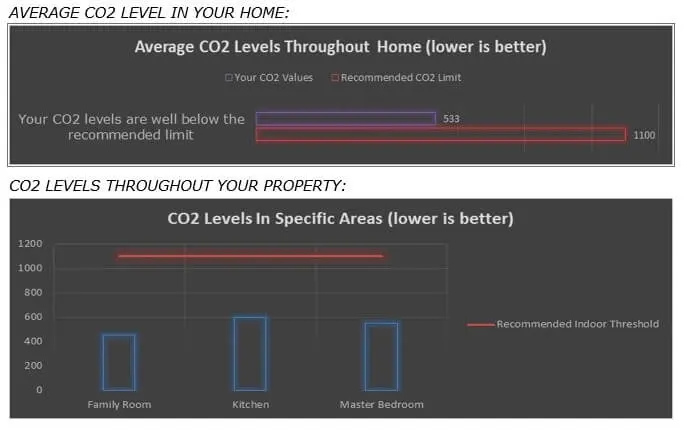Mold Inspection Reports from Lake Stevens
Below are recent mold inspection projects we’ve completed in the Lake Stevens area. These reports can help provide you with an idea of the issues we typically encounter in your region.
Project Type > Mold in Crawlspace Inspection in Lake Stevens
PROJECT SUMMARY
REASON FOR INSPECTION:
- A major water intrusion event occurred and damaged sections of the crawlspace. Client requested an inspection to determine the extent of the damage and to provide a quote for remediation.
PROPERTY DESCRIPTION:
- This single family 2 story residential property was built in 1993 and is 2,071 ft².
JOBSITE PHOTOS
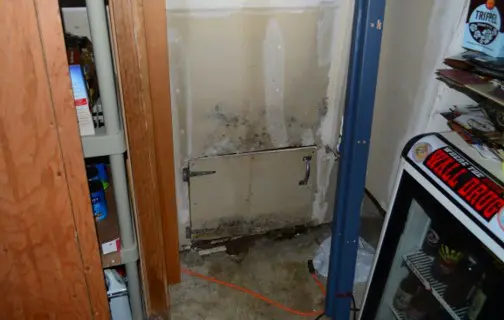
Mold Growth Around Crawlspace Entrance
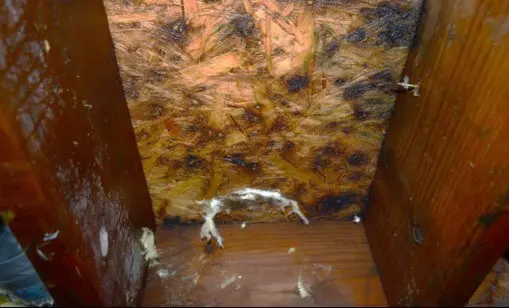
Mold on OSB Subfloor & Saturated Floor Joists
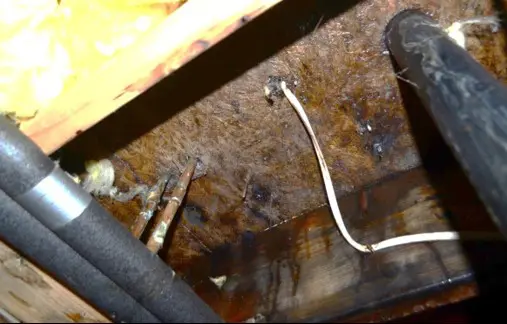
Water Still Dripping Through Subflooring
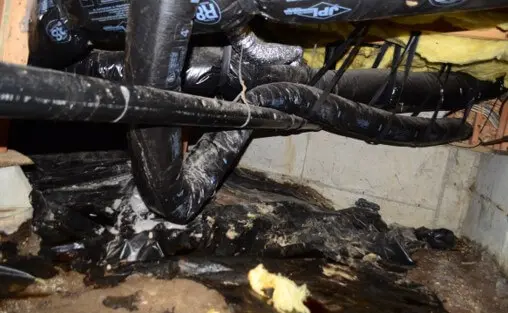
Water Damaged HVAC Ducts & Vapor Barrier
LOCATION: Crawlspace
Observations:
MOISTURE:
Status:
- Elevated moisture detected throughout portions of the crawlspace. The elevated moisture is present in a limited area of the crawlspace, nearest the crawlspace entrance.
- Evidence of a recent water leak was discovered in the crawlspace. The leak is located above the crawlspace hatch door.
Cause:
- Client noted the water damage was due to an issue with the washing machine.
Recommendations:
- Rapid dryout of the crawlspace is necessary to prevent additional mold growth.
Increase the temperature of the affected section of the crawlspace to a minimum of 80° F. A constant supply of fresh outside air also must be provided in order to maintain a low relative humidity (<25%). Environix will address this in the bid, below.
MOLD GROWTH:
Status:
- Mold growth found in an affected area of the crawlspace approximately 250ft²
- 100% of the wet subfloor has moderate to heavy mold.
- 25% of the floor joists have moderate mold.
- At this time, the mold growth it cannot be determined if significant structural damage has occurred to any the underlying materials. Further evaluation will be necessary as the dry-out progresses.
Cause:
- Mold growth due to recent water leak.
Recommendations:
- Remove insulation and treat underlying subfloor and framing. Due to the extent and severity of the mold growth, removal of the insulation is necessary. This treatment will be of the affected 250 ft² area only and will consist of a mildicide application followed by an encapsulant.
INSULATION:
- Sufficient – Crawlspace insulation is sufficient (at least R-30), well secured, and provides good coverage.
- Damaged – A section of approximately 250 ft² of insulation is water damaged in the crawlspace area and must be removed
Recommendations:
- Remove and replace all insulation in the affected treatment area.
AIR SEALING:
- Unsealed – Multiple air gaps present between crawl space and lower floor of building. This greatly reduces the energy efficiency of the home by allowing cold outside air to infiltrate the heated portion of the home.
Recommendations:
- Consider air sealing all major subfloor penetrations.
VAPOR BARRIER:
Status:
- Soiled from water leak – Vapor barrier shows evidence of the water leak.
Recommendations:
- Replace vapor barrier in affected area only. (250 ft²)
DUCTING:
Status:
- Damaged HVAC – Physical damage was noted to section(s) of HVAC ducting.
- Damage type: ducts are filled with water.
- Location of damage: under the water damaged area.
Recommendations:
- Remove and replace the damaged ducts.
TRASH & DEBRIS:
- Trash – Significant amounts of trash and/or construction debris were noted in the crawlspace. This material must be removed to facilitate the necessary repairs and remediation.
Recommendations:
- All trash or debris must be removed from the crawlspace prior to commencement of remediation.
CRAWLSPACE LAYOUT:
Project Type > Mold & Air Quality Inspection in Lake Stevens
PROJECT SUMMARY
REASON FOR INSPECTION:
- Client recently purchased this home and is concerned with mold growth and air quality. Environix hired to inspect the property and provide recommendations where needed.
PROPERTY DESCRIPTION:
- This single family manufactured residential property was built in 1982 and is 1,440 ft².
CAUSE OF MOLD:
- Home has been vacant for over 2 years without heat or ventilation.
LABORATORY RESULTS
ANALYSIS OF YOUR RESULTS:
- Minor Amplification: Mold spores were detected at or near the threshold. This indicates a possible site of mold amplification. Further testing and/or comparison with the results of a visual inspection are necessary to determine the likelihood of indoor amplification.
The most likely contributor of the elevated mold spores is:
- Elevated humidity.
Recommendations:
- Although your indoor mold spore count is elevated, the levels are not high enough to warrant professional remediation. By following the recommendations listed in the report and implementing regular cleaning, the mold spore levels should return to normal.
JOBSITE PHOTOS
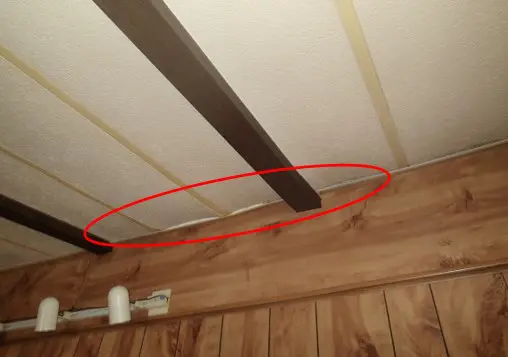
Ceiling is sagging at vaulted peak in family room
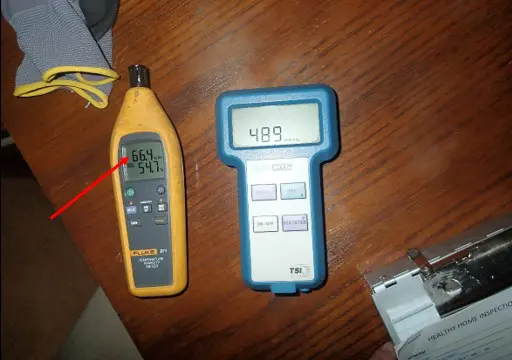
Elevated humidity in home
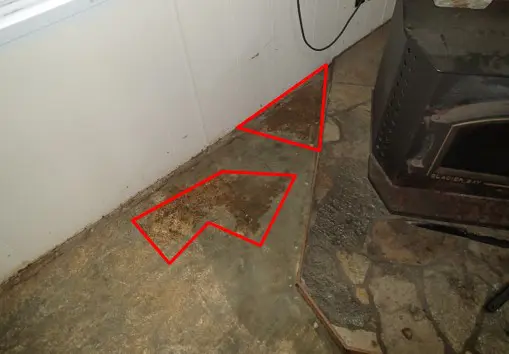
Areas of wet subfloor
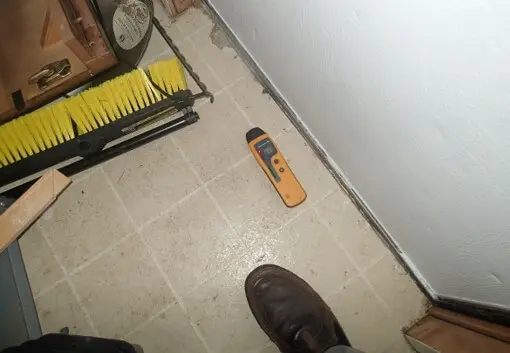
Wet flooring detected near back door entrance
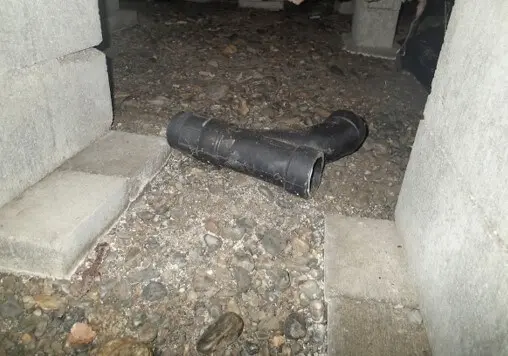
Exposed soil in crawlspace creating humid enviorniment
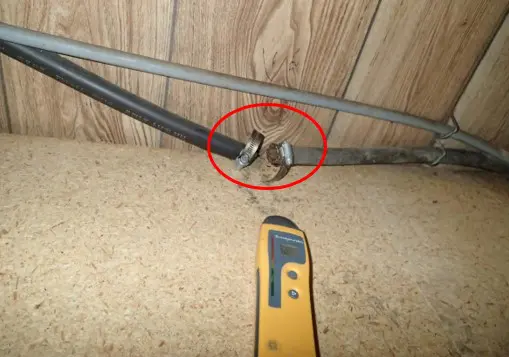
Several broken pipes located in home
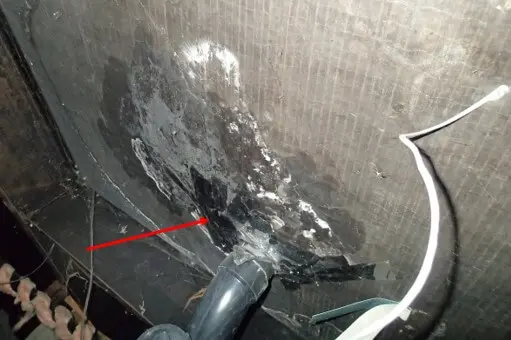
Belly wrap insulation in crawlspace shows signs of leak from above toilet seal
RELATIVE HUMIDITY & TEMPERATURE READINGS:
CO2 READINGS:
LOCATION: Hall Bathroom
OBSERVATIONS:
- No elevated moisture was detected in any tested building materials. However, as the water has been turned off for a long time, any leaks would not currently be active or damp and may have gone unnoticed.
- Client notes a past history of a small water leak from a pipe in the wall by the tub.
SHOWER:
- The bathroom is in very dirty condition. The severity of the dirty conditions may likely justify the replacement of the tub and shower in this bathroom.
FLOORING:
- During the crawlspace inspection, the insulation was noted to be sagging under this bathroom near the toilet. This is likely the result of a toilet seal leak that is currently not active as the water is turned off.
Recommendations:
- Contact a plumbing contractor to replace the toilet seal before the water is turned back on.
- Perform a deep cleaning of all surfaces in this room.
- Replacing the shower and tub is recommended.
LOCATION: Master Bathroom
OBSERVATIONS:
- No fan is present in this bathroom. This is insufficient to exhaust the normal amounts of humidity generated by typical bathroom and shower use.
SHOWER:
- The bathroom is in very dirty condition. The severity of the dirty conditions may likely justify the replacement of the tub and shower in this bathroom.
FLOORING:
- Elevated moisture detected in flooring adjacent to toilet. Often this is due to a slight failure of the toilet seal. No evidence of significant structural damage was observed.
Recommendations:
- Contact a plumbing contractor to replace the toilet seal before the water is turned back on.
- Perform a deep cleaning of all surfaces in this room.
- Replacing the shower and tub is recommended.
LOCATION: Family Room / Dining Room
OBSERVATIONS:
- The carpeting has been removed from this room.
- The room is equipped with metal framed windows with current evidence of moderate condensation and light mold problems.
- The ceiling is sagging in the family room. No elevated moisture was detected in this area. This may be the result of an old leak which is now dry.
Recommendations:
- Recommend having a qualified roofing contractor inspect the roof to determine if there is a leak above the family room ceiling area.
LOCATION: Living Room
OBSERVATIONS:
- The carpeting has been removed from this room.
- The room is equipped with metal framed windows with current evidence of moderate condensation and light mold problems.
- Evidence of water damage was observed in the subfloor near the fireplace.
- Elevated moisture detected in a small section of subfloor. This area is a standalone spot, with no evidence of a roof leak dripping here nor of a leaking pipe in this area. This appears to be the result of a spill, or possible animal urine.
- Elevated moisture detected in the subfloor near the back door entry. The crawlspace below this area has the belly wrap insulation removed and no vapor barrier. This is elevating humidity and creating the subfloor to become damp.
Recommendations:
- The small spots of moisture near the wall in the living room should dry naturally.
- The back door entry subfloor should be reinsulated below and vapor barrier should be added to reduce moisture issues.
LOCATION: Kitchen
OBSERVATIONS:
- Evidence of a former water leak is present under the kitchen sink, and it is very dirty in this area.
- Water lines under the sink have been disconnected.
Recommendations:
- Contact a plumber to assess the plumbing under the kitchen sink to determine if leaks have been addressed.
- Perform a deep cleaning of the materials below the kitchen sink.
LOCATION: Bedrooms
OBSERVATIONS:
- Small areas of water stains were noted on the bedroom ceiling. No elevated moisture was detected in this area.
Recommendations:
- Contact a qualified roofing contractor to inspect the roof over the bedrooms for leaks and assess if the roof requires replacement.


